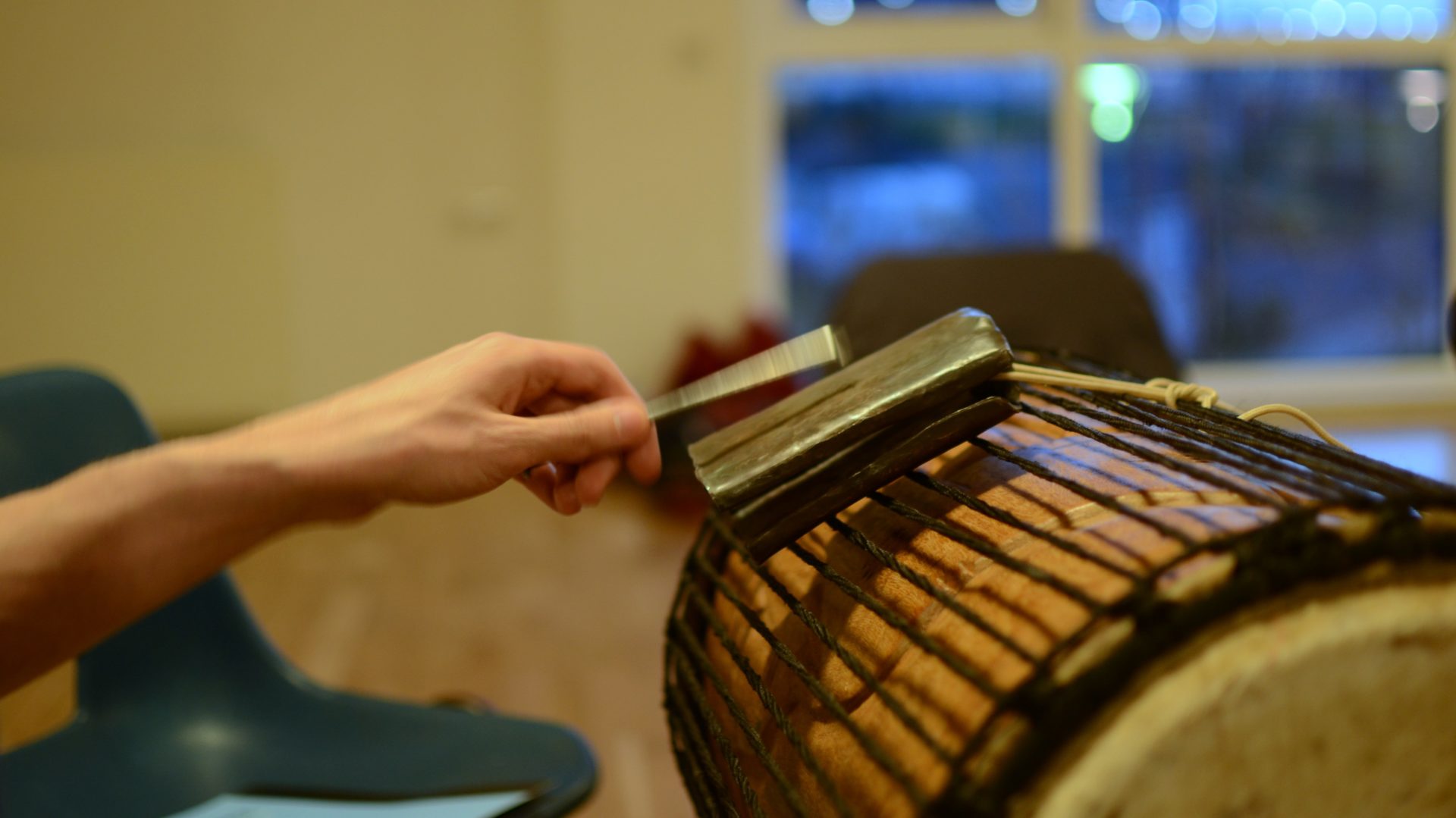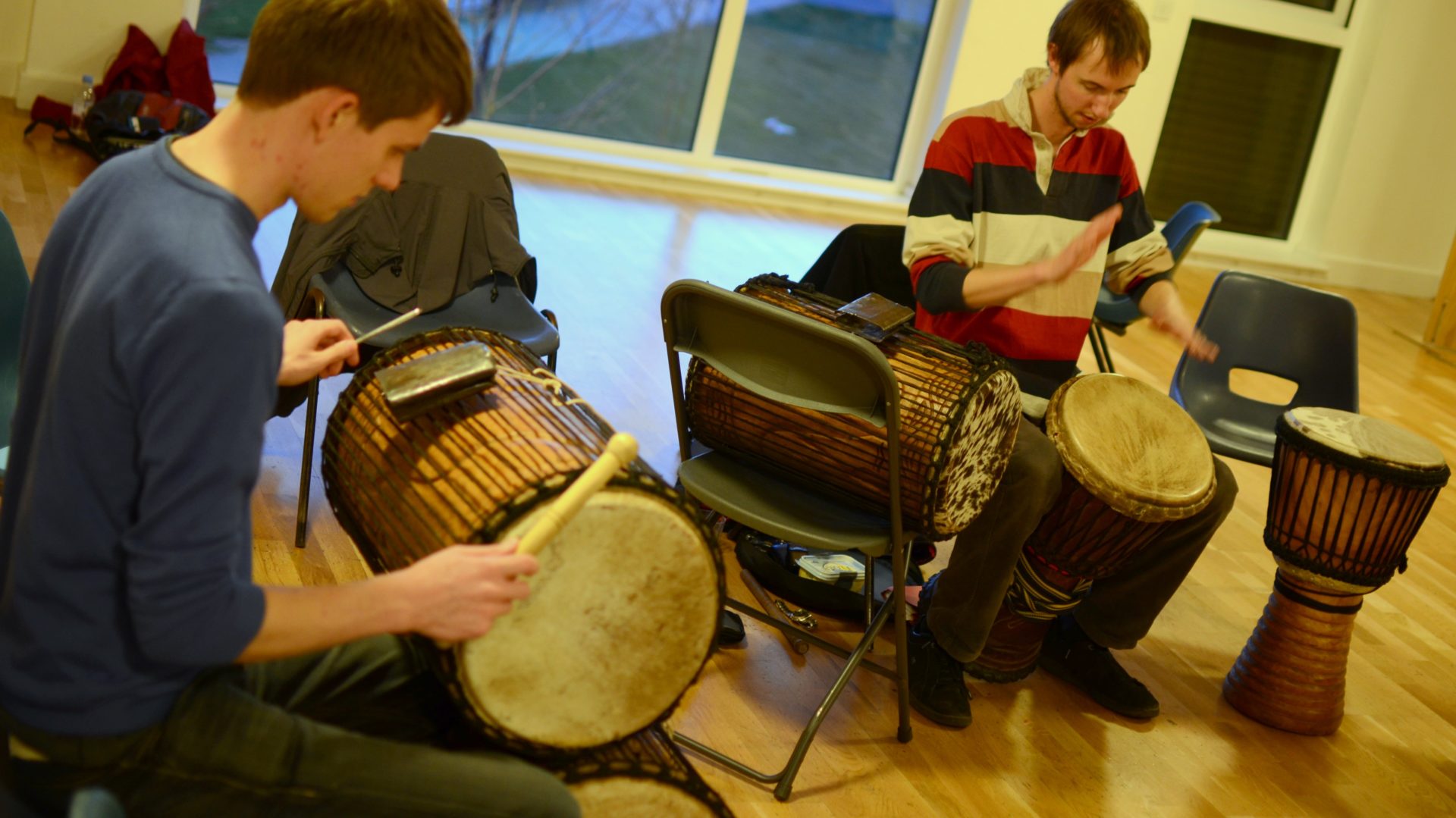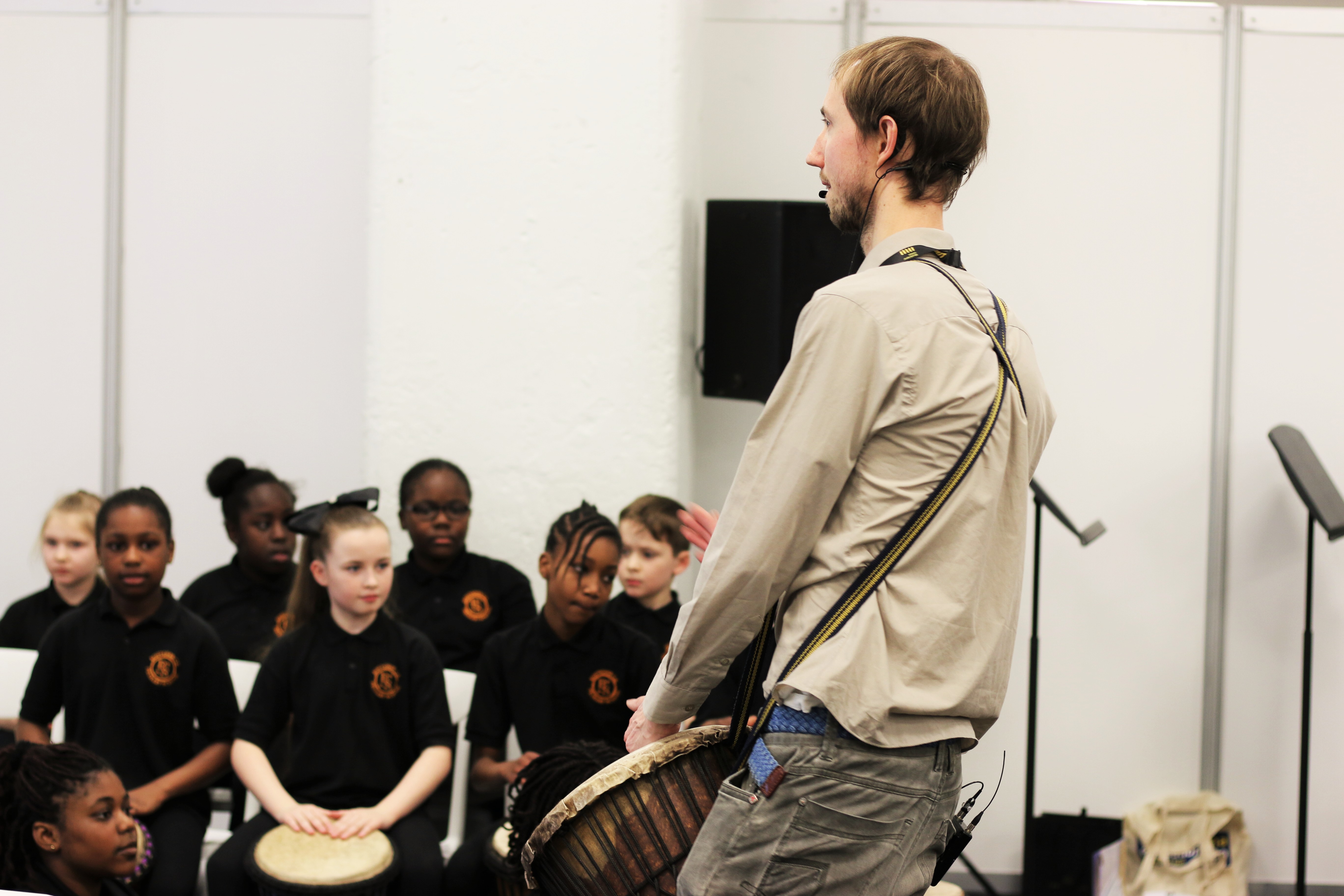Intermediate Course Archive
Blurbs from intermediate courses gone by. You really should have been there, shame on you!…
November-December 2014 course:
Our new ‘master-drummer’ intermediate course for November 2014 will give all class members a chance to try their hand at leading the group!
We will learn to call for drum breaks, to play master drum phrases for dance variations and to play the echauffement (“heating-up”) to signify the climax of the dance rhythm. The dances we will learn are Nmadjaba and Koma from Guinea.
September-October 2014 course:
The art of performance is a brand new intermediate course for September 2014, where students will transform themselves from ‘learners’ to ‘performers’ in the community!
On this course, our class members will learn how to become performers in the African sense (see below for African musical performance). Transforming their mindset from ‘learner’ to ‘performer’ – understanding and remembering many dance rhythms and songs for a complete set of music including Sorsornet, Yankadi, Makru and Soli.
We have performances arranged for the Greenwich West Community and Arts Annual General Meeting and a charity fund-raising evening in Dartford during September, and will create our own open performance class at the New Haddo centre on 21st October.
More about the African ‘art of performance’…
Musical performance in Western culture is generally seen as an observed art form – where the performers are elevated onto a stage and audience members are sat or stood below, detached from the art. The audience will judge for themselves the quality of the entertainment based on many factors such as musicianship, artistry, educational value etc.
In West Africa, traditional musical performance doesn’t acquire the same elevated status or share the same function. Music is an integral part of everyday life and requires active participation between ‘performers’ (musicians) and the ‘audience’ (dancers, singers).
For example, in Senegal, Wolof musicians perform traditional sabar drumming at ‘hen parties‘ where audience members request the musicians to play certain rhythms for the women to take turns to dance solo.
At girls’ l’excision ceremonies in Guinea, the musicians perform for ladies to sing to the mothers of the children – who will engage in ceremonial dancing and sometimes even fighting!
Other common musical performances occur at rain dance festivals before the wet season and wedding celebrations or funeral celebrations, where in each case the performance involves active participation between everyone in the community. A good performance is not judged on the quality of the drumming or the singing, but on the success of the occasion for the community.
July-August 2014 course:
African drumming in Greenwich is back with an exciting 4-week intermediate course on Ghanaian drumming beginning 22nd July!
The course will include a chance to learn by playing with members of the band Noko Ye Dzen, who perform kpanlogo and fume fume music from Accra in Ghana. Students will learn the key rhythms played on bells and maracashes, the supporting drum parts and songs that go with the music.
The aim of this course is to give students a chance to actively observe and play alongside professional musicians, emulating the traditional method of learning for children in Africa.
January-March 2014 course:
Swing styles in djembe drumming will be the theme of this 9-week intermediate course, during which we will explore the ‘swing’ elements of djembe drumming. There are generally 4 different types of swing present in Guinean and Malian drumming, and we during this course will focus on two similar types of swing feel.
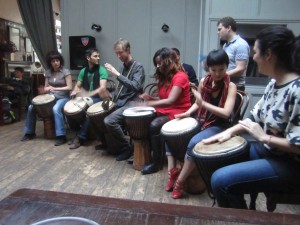
‘Swing’ means the way that notes are placed within a beat. Swing can be between 2 notes: a strong beat and an off-beat (a type of swing feel most famously used in jazz), but can also be heard between 3 notes: a strong beat and two off-beats (found in many World folk music traditions that use compound time) and even between 4 notes: 2 stronger beats divided in half by two differently placed off-beats (as heard in samba from Brazil).
The effect of swing in music is to produce a tension that must be released by movement, or in other words, it makes music for dancing to! West African music uses only 2-note swing feels (which sound like a lazy shuffle feel) and 3-note swing feels (where the 2 off-beats are slightly differently placed within the beat).
This all sounds very mathematical. However, it needn’t be, as African musicians themselves clearly learn their music aurally – and so they get used to the styles of swing without even giving it a thought. Just as Western musicians get accustomed to using an equal temperament tuning system, where certain notes are deliberately tuned flatter and sharper in order to allow instruments to play in all keys, African musicians get used to playing in certain swing feels.
During this course we will use the dance rhythms Yankadi and Mendiani to explore the world of swing in West African djembe drumming.
September-November 2013 course:
The Art of Syncopation in djembe drumming is our new course for September 2013. This 9-week course will explore the art of syncopation in djembe music. On the course we will introduce students to Guinean styles of djembe drumming including Dundunba, one of the signature dance rhythms of the Malinke tribe known for its off-beat style.
We will also explore a modern djembe composition by world renowned djembefola Mamady Keita called Lanaya. Students will learn to appreciate the syncopated basslines of the dunduns, and to perform some syncopated solo djembe dance phrases.
June-July 2013:
West African Musicianship: From Ghana to Guinea, will provide a chance for students to explore the vibrant rhythmical world of music from two different West African tribes.
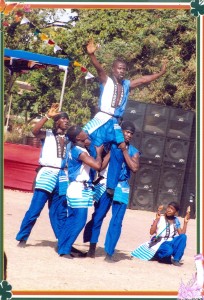
Kpanlogo drumming, folk music of the Ga tribe in Accra, is a relatively modern, sweet-sounding style of music which unites drumming, singing and dancing for traditional and modern communities in Ghana. We will learn to play kpanlogo drums (similar to conga drums), bells, shekeres, and the gome drum (a box-shaped drum).
Students on this course will also learn a djembe dance rhythm called Koma from the villages of Upper Guinea, a (formerly) secret set of traditional rhythms that accompanies a masked ritual dance of the ancient Mandinke fetish religion.

